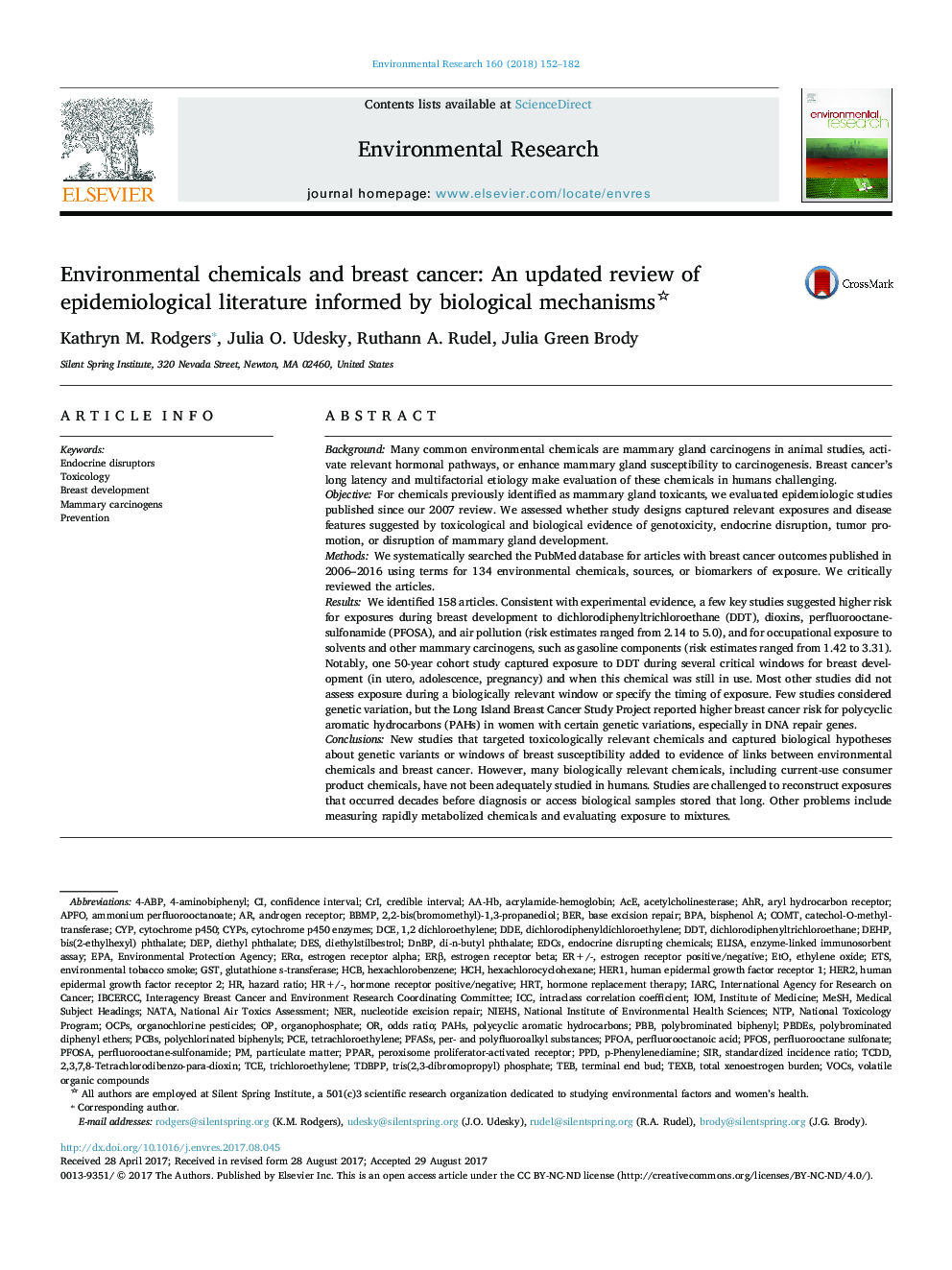| Article ID | Journal | Published Year | Pages | File Type |
|---|---|---|---|---|
| 5756090 | Environmental Research | 2018 | 31 Pages |
Abstract
New studies that targeted toxicologically relevant chemicals and captured biological hypotheses about genetic variants or windows of breast susceptibility added to evidence of links between environmental chemicals and breast cancer. However, many biologically relevant chemicals, including current-use consumer product chemicals, have not been adequately studied in humans. Studies are challenged to reconstruct exposures that occurred decades before diagnosis or access biological samples stored that long. Other problems include measuring rapidly metabolized chemicals and evaluating exposure to mixtures.
Keywords
BPAEPAHER2AHRVOCsDCETCEp-phenylenediamineNTPHRTPFOAPFOSCyPCatechol-O-methyltransferaseICCEToCRIPCEPCBsGSTACEDEPETsPPARHCHHCBdichlorodiphenyltrichloroethaneTCDDBERPBDEsPFASsIOMDnBPSIRDEHPNATAdi-n-butyl phthalateDDEdichlorodiphenyldichloroethyleneCOMTERαERβPPDAPFOPFOSAHER1NIEHSTEB4-ABP4-aminobiphenylCYPsNEREDCsOCPsTetrachloroethyleneOrganochlorine pesticidescytochrome P450 enzymesIARC یا International Agency for Research on CancerInternational Agency for Research on CancerEnvironmental Protection Agencyethylene oxideEndocrine disruptorsOrganophosphateDESAcetylcholinesteraseNational Toxicology ProgramHexachlorobenzenebis(2-ethylhexyl) phthalateBisphenol APolybrominated BiphenylPolychlorinated biphenylsVolatile organic compoundsTrichloroethyleneELISAEnzyme-linked immunosorbent assaynucleotide excision repairbase excision repairBreast developmentenvironmental tobacco smokeDiethyl phthalateDiethylstilbestrolPolybrominated diphenyl ethersDDTparticulate matterPBBToxicologyPerfluorooctane sulfonateCytochrome P450intraclass correlation coefficientconfidence intervalcredible intervalMeshEndocrine Disrupting Chemicalsper- and polyfluoroalkyl substancesNational Institute of Environmental Health SciencesInstitute of MedicineMedical Subject Headingsstandardized incidence ratiohazard ratioodds ratiohormone replacement therapyHexachlorocyclohexanePolycyclic aromatic hydrocarbonsPAHsTerminal end budammonium perfluorooctanoatePerfluorooctanoic acidPreventionglutathione S-transferasearyl hydrocarbon receptorAndrogen ReceptorEstrogen receptor alphaEstrogen receptor betaHuman epidermal growth factor receptor 2peroxisome proliferator-activated receptor
Related Topics
Life Sciences
Environmental Science
Health, Toxicology and Mutagenesis
Authors
Kathryn M. Rodgers, Julia O. Udesky, Ruthann A. Rudel, Julia Green Brody,
